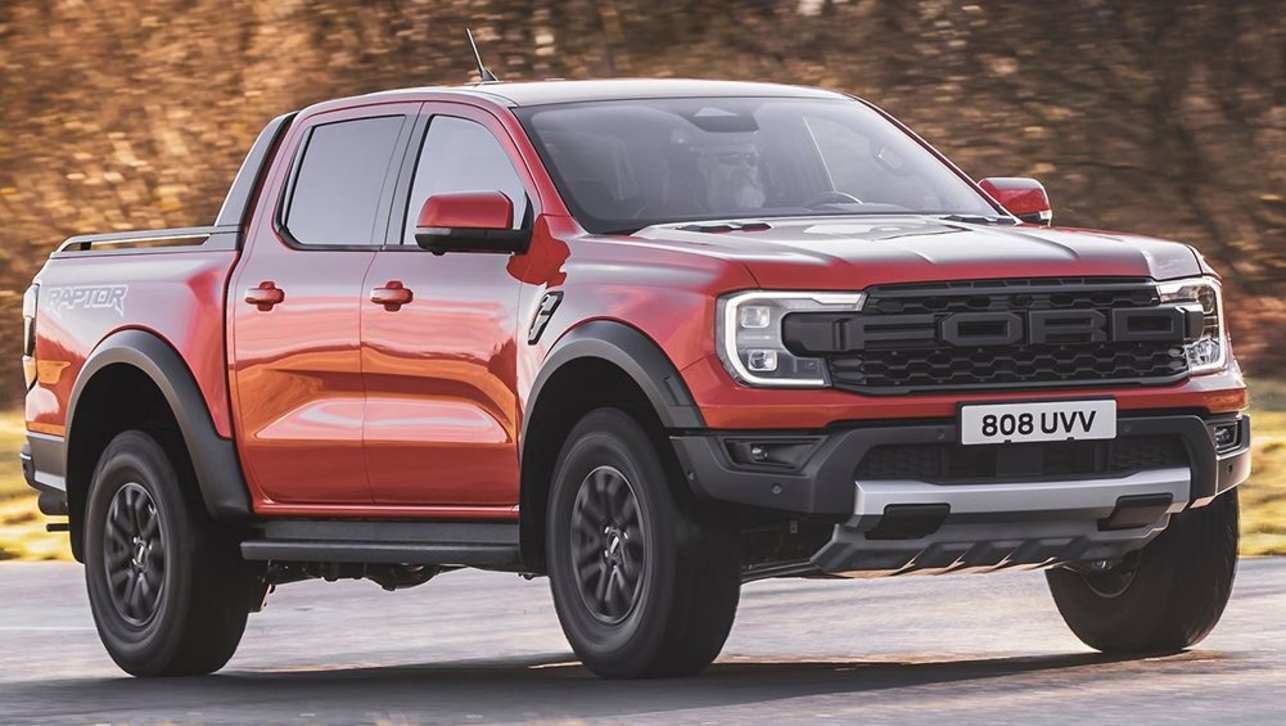Volkswagen will not have access to the beefed-up bodywork, V6 petrol powertrain and other modifications that collectively turn the Ford T6.2 Ranger into the 2022 Raptor flagship for its coming next-generation Amarok due out in Australia sometime early next year.
Speaking to the Australian media near Renmark in South Australia late last month, Ford Motor Company vehicle program director for Icons and Ford Performance, Ali Jammoul, said that there are no plans for the German brand to offer an Amarok version of the new Raptor as we know it.
“We want to protect (Raptor),” he commented. “I am happy that this is Ford’s decision.”
The sentiment is echoed by other Ford and Ford Performance executives, it seems, with one engineer claiming that Volkswagen had approached the company on more than one occasion to develop an Amarok version of the Raptor.
It has also been revealed that the contract between Ford and Volkswagen centres squarely on providing the regular T6.2 Ranger technologies and not the Ford Performance modifications.
As we reported earlier this year, Volkswagen may still pursue a high-performance Amarok via its connection with independent automotive engineering outfit Walkinshaw, as per the recent W Series models of the current Amarok.
This would give the German-branded truck a strong point of difference compared to the donor model.
While Volkswagen’s contract with Ford appears to exclude the 292kW/583Nm 3.0-litre twin-turbo V6 petrol engine and other Raptor changes, it does include Ford’s 3.0-litre V6 turbo-diesel (with power and torque outputs of 184kW and 600Nm respectively in the Ranger’s case, helping it achieve the maximum 3500kg towing capacity on some models), 10-speed torque-converter automatic transmission and permanent four-wheel drive system, as well as the advanced safety and driver-assist systems – all of which are new to the P703 Ranger and its U704 Everest SUV sibling.
It’s worth noting that the outgoing Amarok, developed solely by Volkswagen and sourced from Argentina or Germany according to market and/or specification since 2010, has included or adopted (VW-supplied) V6 diesel power, permanent 4WD and some safety/driver-assist systems over the course of its run, while these were unavailable in the outgoing (P375) Ranger as sold in Australia.
Keep in mind, too, that the new Amarok may be a fraternal twin to the P703 Ranger under the skin, but it will have distinctive front-end styling and – we understand – an altered interior to reflect its Volkswagen branding.
We also understand that the VW will be built solely at Ford’s recently refurbished South African facility, while our Rangers will continue to arrive (largely) from Thailand for Australian consumption.
Finally, it is expected that the – along with the aforementioned diesel V6 of undisclosed power and torque outputs – the 2023 Amarok is also likely to use Ford’s 2.0-litre four-cylinder diesel engines. In the T6.2 Ranger, the twin-turbo BiTurbo pumps out 154kW/500Nm while the base single-turbo unit produces 125kW/405Nm.
We’ll know much more about the T6.2-based Amarok closer to its global unveiling later on this year, so please stick around.




.jpg)



.jpg)





.jpg)


_0.jpg)


.jpg)
.jpg)
.jpg)
.jpg)


.jpg)

.jpg)
.jpg)

Comments